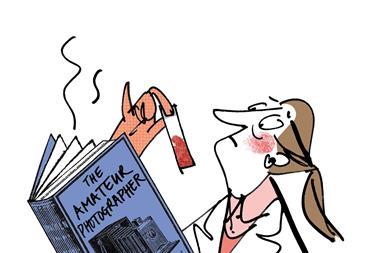Fluorescence responses can be analysed using digital photography instead of spectroscopy, say scientists in Germany. The technology could eventually be integrated into smart phones.
Uwe Bunz and his colleagues from the University of Heidelberg used digital photography to study the optical changes occurring when different pyridine-substituted cruciform (cross-conjugated) fluorophores (XF) were subjected to protonation. They protonated the nitrogen on the pyridine and observed the colour changes of the XFs in the presence of carboxylic acids.

The team extracted data from the photographs by transforming the red, green and blue (RGB) values into numerical values, a process that helps define the colour and removes brightness information. ‘The method is quick and inexpensive, and large data quantities can be stored and acquired in seconds,’ says Bunz.
The RGB values from the photographs and spectral information from an emission spectrum were converted into the same standardised colour space for each sample. In doing so, the team were able to make comparisons and record the correct encoding of colour information for each XF. Accumulating a collection of numerical values for each fluorophore would result in a digital library of information.
‘Recent years have seen an increase in popularity in qualitative analysis of various species through the use of simple emission colour photography,’ says Ognjen Miljanic from the University of Houston, US. ‘It’s a fast and facile alternative to rigorous, but labour-intensive, spectroscopic titrations.’ He adds that ‘in this new seminal contribution, Bunz and co-workers have established the largely missing correlation between the photographically recorded colours and complete emission spectra. They present an eminently useful tutorial for future researchers in the field, pointing out that – with some caveats – simple photography can often match emission spectroscopy in its ability to identify unknown analytes.’
Future challenges for Bunz include making a ‘pocket fluorimeter’ with the technology. He believes that colour information could be extracted from fluorescent solutions using a mobile phone camera as the spectrometer, alongside an app that can analyse the complex data sets to identify the solutions.







No comments yet